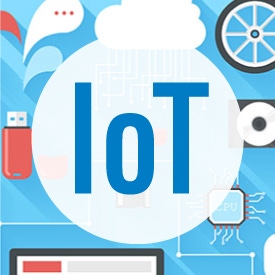Two massive software vendors have decided to combine their cloud computing and IoT offerings in order to take advantage of the trend toward edge computing.

Microsoft and Cisco announced they plan to partner on technologies targeting IoT and edge computing.
The pairing essentially amounts to two major software vendors hoping to attract more customers with a deeper and wider product portfolio than they could provide separately. It's also a reflection of the maturation in the Internet of Things (IoT) and cloud computing spaces, and the rapid rise of edge computing network designs that could have major implications for both sectors.
"As computing resources and IoT networking devices become more powerful, the ability to manage vast amounts of data near the edge will mean infrastructure and operations teams are required to manage more advanced data workloads, while keeping pace with business needs," explained Microsoft's Tony Shakib, one of the company's top IoT executives, in a blog post by the company announcing its teaming with Cisco.
In the post, Shakib outlined the nuts-and-bolts details behind the pairing of Cisco and Microsoft: "Using software-based intelligence pre-loaded onto Cisco IoT network devices, telemetry data pipelines from industry-standard protocols like OPC-Unified Architecture (OPC-UA) and Modbus can be easily established using a friendly UI directly into Azure IoT Hub. Services like Microsoft Azure Stream Analytics, Microsoft Azure Machine Learning, and Microsoft Azure Notification Hub services can be used to quickly build IoT applications for the enterprise," he wrote. "Additional telemetry processing is also supported by Cisco through local scripts developed in Microsoft Visual Studio, where filtered data can also be uploaded directly into Azure IoT Hub."
Why this matters
Already both Cisco and Microsoft are major players in the IoT sector. Much of Cisco's business in the arena of wide-area IoT comes from its $1.4 billion acquisition of Jasper in 2016, an operation it has been supplementing with other acquisitions such as its purchase last year of Sentryo.
Microsoft, meanwhile, has been working to build out its own IoT business focused on its Azure cloud computing service. Indeed, the company announced in 2018 a plan to invest fully $5 billion into IoT.
But the new edge computing trend has been making strange bedfellows across much of the technology and telecommunications industry. Google just this week announced new edge computing partnerships with the likes of AT&T and Telecom Italia, while Verizon and Vodafone are among the operators participating in Amazon AWS' new edge computing initiative. Microsoft's Azure, meanwhile, announced edge computing work with AT&T last year.
Edge computing proponents argue the technology could fundamentally change the way the Internet works by breaking up centralized data centers into thousands or millions of smaller edge computing sites. The goal would be to make computing cheaper, more secure and easier to obtain, and to reduce the network traffic to and from large, centralized data centers, among other benefits.
In IoT, edge computing is particularly noteworthy considering it would allow water meters, temperature sensors and other Internet-connected objects to conduct calculations geographically closer to where they are physically located.
"We are validating Cisco's next-generation edge data software, Cisco Edge Intelligence along with Azure IoT services for our cloud software development. Cisco's out-of-the-box edge solution with Azure IoT services helps us accelerate our digital journey," said Stefan Pöchtrager in the post by Microsoft's Shakib. Pöchtrager is the enterprise architect with Voestalpine AG, a giant, steel-producing company based in Linz, Austria – exactly the kind of outfit that would be interested in IoT and edge and cloud computing.
However, because edge computing is still more of a concept than a reality, it's unclear how the space will ultimately develop – and which companies might actually take advantage of the trend.
— Mike Dano, Editorial Director, 5G & Mobile Strategies, Light Reading | @mikeddano
About the Author(s)
You May Also Like











